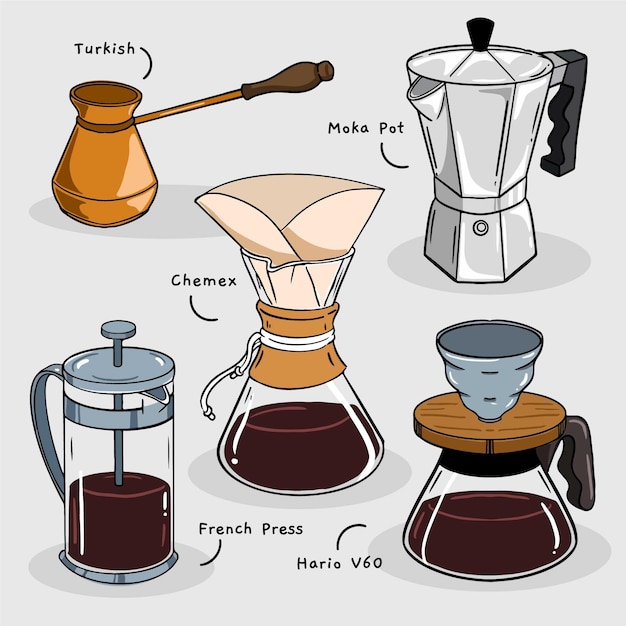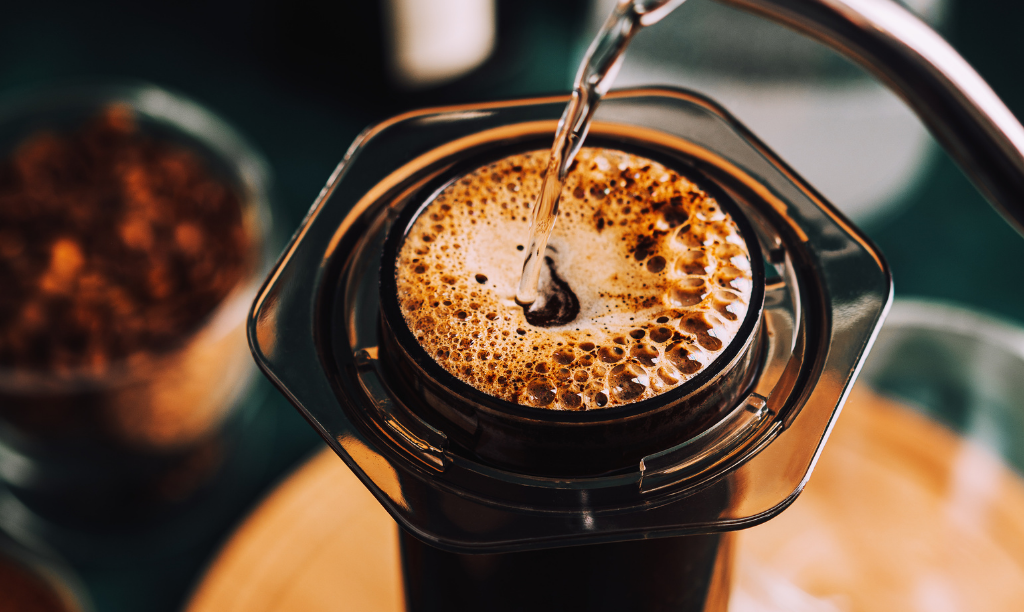Exploring the Best Coffee Brewing Methods for Perfect Taste Each Time
Exploring the Best Coffee Brewing Methods for Perfect Taste Each Time
Blog Article
The Science Behind Coffee Brewing: Just How Temperature Level and Time Affect Your Drink
Comprehending the scientific research behind coffee developing discloses that temperature and time are not mere variables yet crucial elements that determine the beverage's taste account and overall high quality. As we explore the nuances of these elements, the inquiry develops: how can one properly balance temperature level and time to attain that ideal mixture?
The Chemistry of Coffee Removal
The chemistry of coffee removal dives into the elaborate procedures that transform raw coffee beans right into the aromatic beverage enjoyed worldwide. This change mostly includes the solubility of numerous compounds existing in the beans, which are affected by factors such as work size, water high quality, and the developing method used.
During the brewing process, warm water acts as a solvent, drawing out soluble substances, consisting of caffeine, sugars, lipids, and acids, from the coffee grounds. Each compound adds to the flavor account, scent, and body of the last beverage. Acids are responsible for brilliant and tasty notes, while oils contribute to a rich mouthfeel.
The initial phases of brewing extract acids and sugars, leading to a positive acidity, while prolonged removal can lead to bitterness due to over-extraction of unfavorable compounds. Recognizing these chemical communications is essential for optimizing brewing strategies, as the equilibrium between removal time and water temperature level can substantially influence the overall high quality of the coffee.
Suitable Brewing Temperatures
Discovering the appropriate developing temperature level is essential for opening the full capacity of coffee flavors and scents - coffee brewing methods. Study shows that the optimal variety for developing coffee exists in between 195 ° F to 205 ° F(90 ° C to 96 ° C) Within this array, the removal procedure efficiently dissolves the desirable soluble substances in coffee beans, causing a delicious and balanced mug
Developing at lower temperature levels, such as below 195 ° F(90 ° C ), may lead to under-extraction, yielding an acidic and weak brew with soft flavors. Alternatively, brewing at temperatures surpassing 205 ° F(96 ° C) can result in over-extraction, creating a bitter and extreme taste because of the excessive dissolution of unfavorable substances, such as tannins.
Furthermore, the excellent brewing temperature level can differ relying on the coffee bean kind and roast degree. As an example, lighter roasts frequently take advantage of slightly higher temperature levels to improve their intricate taste profiles, while darker roasts may be much better suited to reduced temperatures to reduce resentment.
Eventually, preserving precision in brewing temperatures is crucial for attaining an unified equilibrium of tastes, making sure that every cup of coffee provides a gratifying sensory experience.
Influence of Developing Time
Developing time plays a critical function in figuring out the flavor profile and overall quality of coffee. The extraction procedure, which influences the preference, fragrance, and body of the beverage, is mostly based on for how long the coffee premises are in call with water. Shorter brewing times can result in under-extraction, resulting in a sour or weak taste, as inadequate soluble compounds are dissolved. On the other hand, extended brewing can lead to over-extraction, where unwanted substances are released, resulting in a bitter or astringent preference.
Optimal developing time varies relying on the approach utilized and the work dimension of the coffee. For example, a French press typically calls for about 4 minutes, while coffee extraction is generally finished within 25 to 30 secs. It is necessary to calibrate developing time in conjunction with other variables, such as water temperature and coffee-to-water ratio, to attain the preferred taste profile.
Comprehending the influence of brewing time enables coffee lovers to fine-tune their brewing methods, ultimately improving the sensory experience of their mug (coffee brewing methods). why not try this out With mindful attention to this variable, one can open the complete possibility of the coffee, exposing its one-of-a-kind characteristics and nuances
Developing Approaches and Their Results

For circumstances, techniques like French press and chilly mixture permit a longer steeping time, causing a fuller body and robust taste because of boosted removal of oils and soluble solids. Alternatively, coffee brewing makes use of high stress and a much shorter removal time, producing a focused shot that stresses extreme tastes and a rich crema.
Pour-over strategies, such as Chemex or V60, supply a more regulated removal procedure, enabling the maker to control circulation price and water circulation, which can enhance brightness and clarity. Percolation approaches cycle water through the coffee premises numerous times, leading to a more powerful, commonly bitter flavor.
Last but not least, using paper filters versus metal filters can additionally influence the final preference; paper filters generally generate a cleaner cup by trapping oils and fine particles, while steel filters allow even more oils to travel through, adding to a fuller mouthfeel - coffee brewing methods. Understanding these nuances can raise the coffee experience dramatically
Tips for Refining Your Brew
A well-executed brew can transform also the simplest coffee into a remarkable experience. Grind the beans simply prior to brewing to make best use of freshness, making certain the grind dimension matches your developing technique-- coarser for French press and finer for coffee.
Water quality plays a critical role; use filteringed system water devoid of pollutants. The perfect developing temperature level ranges between 195 ° F and 205 ° F(90 ° C to 96 ° C ) Also hot can scorch the coffee, while as well trendy may under-extract tastes.
Timing is just as important. For immersion methods, steeping for 3 to 5 minutes is ideal, whereas drip methods generally take around five mins. Explore brew times to locate your recommended stamina.

Final Thought
In summary, the complex connection between temperature level and time is vital in the coffee developing procedure. Recognizing these scientific principles empowers individuals to improve their brewing techniques, ultimately leading to an extra satisfying and well balanced coffee experience.
Comprehending the science behind coffee developing reveals that temperature level and time are not plain variables however next crucial elements that determine the drink's taste account and overall top quality. Understanding these chemical communications is critical for enhancing brewing methods, as the balance between extraction time and water temperature level can dramatically influence the general quality of the coffee.Developing time plays a critical visit this website role in determining the taste profile and overall top quality of coffee. By focusing on these components-- bean high quality, grind size, water temperature level, steeping time, and proportion-- you can boost your coffee brewing process, resulting in a regularly premium cup.
In summary, the elaborate partnership in between temperature and time is critical in the coffee developing procedure.
Report this page